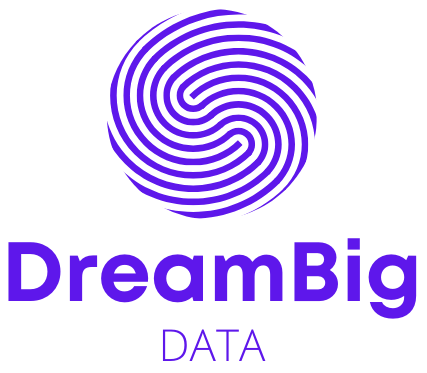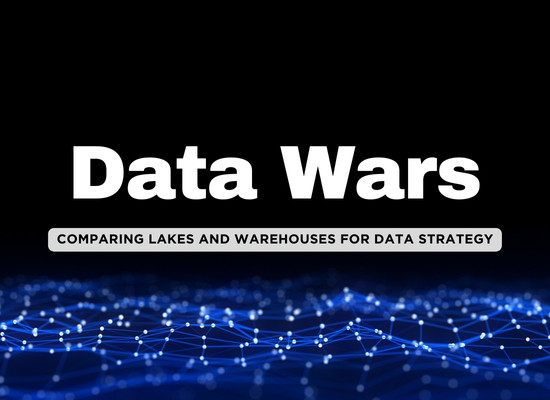Data lakes and data warehouses are the backbone of modern data strategies, but each serves a unique purpose. As businesses become more data-driven, knowing when to use a lake, a warehouse, or both can transform how you extract insights and make decisions. While data lakes excel at handling vast amounts of raw, unstructured data, data warehouses shine in delivering fast, structured analytics. Let’s explore the critical differences in detail to understand which approach is right for your data needs.
1️⃣ Data Structure and Organization 📂
How They Handle Data
- Data Lake: Stores raw, unstructured, semi-structured, and structured data. There’s no need to define a schema upfront, making it ideal for a wide variety of data types (e.g., IoT data, social media logs, and text files).
- Data Warehouse: Stores structured data with predefined schemas and tables. Each dataset must conform to a strict format, optimized for relational queries and business intelligence applications.
Advantages and Challenges
- Data Lake:
- Advantage: Offers flexibility to store all types of data for data scientists and analysts to explore.
- Challenge: Unstructured data can become a “data swamp” if not managed properly, making it hard to extract useful insights.
- Data Warehouse:
- Advantage: Pre-organized data ensures fast query performance and clear, reliable reporting for business users.
- Challenge: Schema rigidity makes it difficult to accommodate new or irregular data types without re-architecting.
DreamBigData Tip: Use a data lake to collect raw, diverse data and then move critical insights to a data warehouse for structured reporting.
2️⃣ Storage Costs 💲
Cost Considerations
- Data Lake: Data lakes use cheap, scalable object storage (e.g., AWS S3, Google Cloud Storage). Because the data is stored without heavy processing or optimization, costs are significantly lower.
- Data Warehouse: Warehouses rely on structured storage, which is optimized for performance. This requires more resources, leading to higher storage and compute costs, especially for large datasets.
When Cost Becomes a Factor
- Data lakes are ideal for organizations that need to store huge amounts of data (e.g., for ML and AI projects) but don’t require real-time analysis.
- Data warehouses are suited for business-critical operations that need fast, optimized queries and analytics, even if the cost is higher.
DreamBigData Tip: Implement tiered storage: keep raw data in a data lake and migrate frequently accessed data to a warehouse for analytics.
3️⃣ Data Access and Performance ⚡
Access and Query Speed
- Data Lake: Designed for scalable storage, but accessing raw, unindexed data can lead to slow query performance. Data lakes typically require pre-processing and tools like Apache Spark, Presto, or Databricks to efficiently handle queries.
- Data Warehouse: Built for high-speed, structured queries. Indexing, partitioning, and schema optimization allow for near-instant access to analytics and reporting tools.
Use Cases for Access Models
- Data lakes support data scientists, researchers, and engineers who need to perform data exploration, often with complex transformations.
- Data warehouses are optimized for business analysts and operations teams who require fast insights for decision-making.
DreamBigData Tip: Use query engines like Amazon Athena or Google BigQuery for direct querying on data lakes, reducing the need for costly data migration to a warehouse.
4️⃣ Use Cases 🎯
How They Are Used
- Data Lake: Ideal for data exploration, AI, machine learning, and big data analytics. It allows analysts to store raw data without worrying about immediate structuring, making it easier to test new data models and algorithms.
- Data Warehouse: Best for structured reporting, dashboards, and business intelligence (BI) tools. It provides reliable, consistent data for business leaders to make informed decisions.
Examples of Use Cases
- Data Lake:
- Machine learning models requiring access to large amounts of diverse data (e.g., logs, images, and video).
- Storing raw IoT data for future analysis.
- Research and experimentation with data that may not have immediate business value.
- Data Warehouse:
- KPI reporting and tracking for business units.
- Real-time financial analytics and operational dashboards.
- Customer relationship management (CRM) analytics for marketing and sales teams.
DreamBigData Tip: Use a lakehouse architecture—a blend of both—to support diverse data processing and BI analytics in one system.
5️⃣ Scalability and Flexibility 📈
How They Scale
- Data Lake: Designed to handle petabytes of data with ease, using scalable cloud storage solutions. Data lakes can ingest massive volumes of data from multiple sources without performance degradation.
- Data Warehouse: While warehouses can also scale, their performance depends on optimized schema design and compute resources. Scaling a warehouse can become expensive and complex, particularly with large datasets.
Flexibility Differences
- Data Lake:
- Highly Flexible: Can store any data type, making it adaptable to future changes in business needs.
- Open-Ended Queries: Ideal for exploratory analysis where data structures aren’t yet known.
- Data Warehouse:
- Less Flexible: Requires rigid schemas and data transformations before storage, limiting adaptability.
- Structured Queries: Optimized for predefined queries and structured analytics.
DreamBigData Tip: Use data lakes to accommodate evolving data sources and warehouses to manage stable, business-critical data.
6️⃣ Integration with Modern Tools 🛠️
Tool Compatibility
- Data Lake: Integrates with big data frameworks like Apache Hadoop, Spark, and AI/ML platforms like TensorFlow. Data lakes are also increasingly supported by cloud-native services like AWS Glue and Azure Data Factory for ETL (extract, transform, load) processes.
- Data Warehouse: Optimized for BI tools like Tableau, Power BI, and Looker. Warehouses offer pre-built connectors for fast and seamless integration with enterprise systems.
Key Integration Differences
- Data Lake:
- Suited for data scientists and engineers who require advanced data manipulation and scalable computing.
- Supports modern, open-source data frameworks for high-complexity analytics.
- Data Warehouse:
- Designed for business users, analysts, and managers who need straightforward, query-ready data.
- Focused on fast integration with reporting platforms and standardized data models.
DreamBigData Tip: Leverage cloud platforms that offer both data lakes and warehouses with unified integration to reduce data duplication and inefficiencies.
7️⃣ Data Security and Governance 🔐
Security Differences
- Data Lake: Security can be more challenging due to the unstructured nature of stored data. Without proper access controls and encryption, data lakes are prone to becoming “data swamps” where sensitive data can be mishandled. Role-based access control (RBAC), data masking, and encryption are critical for secure data lakes.
- Data Warehouse: Offers built-in security features tailored for structured data, including granular access control, auditing, and compliance tools. Since data is highly organized, applying governance policies is more straightforward.
Governance Focus
- Data Lake:
- Requires strong metadata management to maintain data quality and traceability.
- Often integrates with data catalogs to help users discover and understand data assets.
- Data Warehouse:
- Data governance is embedded within schema design, making it easier to enforce policies.
- Built for industries with strict compliance requirements, such as finance and healthcare.
DreamBigData Tip: Implement robust data catalogs for lakes and warehouses to track data ownership, usage, and lineage across your organization.
8️⃣ Query and Processing Models 🔍
How Queries Work
- Data Lake: Uses distributed computing frameworks like Apache Spark, Presto, or AWS Athena for querying. These tools handle both batch and real-time data but require expertise to optimize performance on raw data.
- Data Warehouse: Built to handle fast SQL queries and complex joins with minimal tuning. Query optimization, indexing, and partitioning improve response times, even with large datasets.
Processing Power
- Data Lake: Supports parallel processing across many nodes, making it suitable for analyzing massive datasets but with a trade-off in query performance.
- Data Warehouse: Focuses on delivering fast query results for structured data, often leveraging in-memory processing and indexing.
DreamBigData Tip: For hybrid needs, use tools like BigQuery or Snowflake that can query both structured and semi-structured data in a single platform.
9️⃣ Data Lifecycle Management ♻️
How They Manage Data Over Time
- Data Lake: Emphasizes the storage of raw data for long-term use, allowing data scientists to reprocess and reinterpret data as business needs change. Lifecycle policies can automate the movement of data between storage tiers (e.g., from hot to cold storage).
- Data Warehouse: Focuses on managing curated, time-sensitive data. Historical data is often archived or offloaded to reduce storage costs, limiting the warehouse to active data used in reporting.
Lifecycle Optimization Techniques
- Data Lake:
- Implements storage tiering for cost efficiency, such as moving older data to cold or archive storage.
- Supports long-term retention policies for regulatory compliance.
- Data Warehouse:
- Typically employs data archiving to keep active data manageable.
- Less emphasis on unstructured or long-term raw data retention.
DreamBigData Tip: Implement lifecycle automation tools (e.g., AWS S3 Lifecycle Policies or Azure Blob Storage Tiers) to optimize data storage costs over time.
🔟 Future Trends and Innovations 🚀
Emerging Innovations
- Data Lakehouse: The rise of the lakehouse architecture aims to merge the best of both worlds. It allows businesses to store raw data while enabling fast, structured queries through optimized storage and metadata management. Examples include Databricks Lakehouse and Google BigLake.
- AI and Machine Learning Integration: Both lakes and warehouses are evolving to better support AI-driven analytics. Data warehouses are increasingly capable of handling semi-structured data, while data lakes are adopting performance improvements to support real-time AI workloads.
- Serverless and Cloud-Native Platforms: Cloud providers are offering serverless options that dynamically allocate resources based on query demand, reducing costs and management overhead.
What the Future Holds
Expect more hybrid models where companies use data lakes for large-scale data collection and analysis, then streamline critical insights into warehouses for operational reporting. The continued convergence of these architectures will shape how businesses process, analyze, and store data in the coming years.
DreamBigData Tip: Stay ahead of the curve by adopting scalable, cloud-native platforms that support both data lakes and warehouses for unified data strategies.
As data-driven decisions become essential for business success, understanding the strengths and limitations of both data lakes and data warehouses is critical. While data lakes offer unparalleled flexibility for unstructured data and advanced analytics, warehouses provide the speed and structure needed for real-time business insights. By leveraging both strategies—or adopting emerging hybrid models—you can maximize data utility, control costs, and stay ahead of future innovations. With the right architecture, your business can unlock the full potential of big data.



